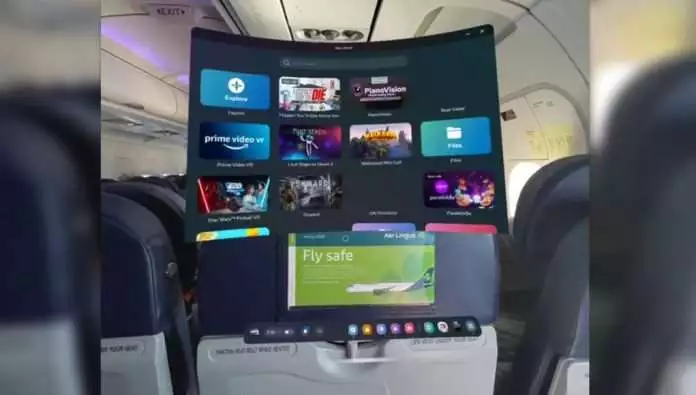Airplanes appear to be a perfect venue to experiment with VR, since you can swap out the tiny aircraft setting for a huge movie theater or spend hours browsing the web on a massive screen—something that should not upset your seat mates too much. Although Quest’s tracking is one of the most dependable available, it still has issues with moving vehicles such as airplanes and cars. Meta appears to be attempting to resolve this issue.
Anyone who has used Quest on an airplane knows that it is only useful if you have attained a stable altitude and direction. When taxiing, banking, taking off, or landing, you’ll rapidly find yourself unintentionally jostled around in VR, rendering it distractingly worthless. Gain attitude, and you might find yourself falling through the virtual floor.
In response to X (previously Twitter) user Andrew Fox, Meta CTO Andrew Bosworth stated that the business is working on ways to improve Quest’s performance for in-flight entertainment.
Is it really not possible to use Quest 3 in passthrough mode on a plane? pic.twitter.com/aIBB0s2MT5
— Andrew Fox (@afoxdesign) January 24, 2024
Here’s Bosworth’s response:
“No, we use an IMU to keep objects localized relative to your headset motion so moving vehicles represent a challenge (when they accelerate in any direction). We also use the cameras, of course, they work together as the IMU is higher frequency but lower accuracy. Working on it!”
The problem is essentially the same for any optically tracked VR headset on the market at the moment. However, this has not deterred businesses from devising creative solutions. Holoride, an Audi-backed business, collaborated with HTC to integrate its standalone Vive Flow headset into automobiles via a retrofitting device that compensates for the vehicle’s relative motion, allowing users to interact with a selection of licensed applications.
In 2021, Meta announced a cooperation with BMW to better attach virtual objects by integrating Quest’s tracking technology into the automobile itself. Although the business provided an update on the research project in mid-2023, it is unclear when we will see it in the company’s consumer VR headsets.
Apple has undoubtedly been one of the more prominent names to promise a solution to travel troubles recently, as the firm revealed its $3,500 Vision Pro headset will have a ‘Travel’ mode, which Apple claims can be used to “stabilize visuals for use on planes.” At this moment, it’s unclear how this works, although it’s plausible that the headset changes to a specific tracking mode that relies solely on optical sensors and ignores IMUs. It would result in less precise tracking overall, but it would still be useful in an airplane.
Could Meta be doing anything similar? It is likely. If the firm intends to maintain fundamental feature parity with Vision Pro, which releases on February 2nd, we might see something sooner rather than later. Of course, there’s no schedule for Meta’s efforts just yet, so we’ll be keeping a watch on Bosworth’s Instagram, where he frequently performs Q&As.


